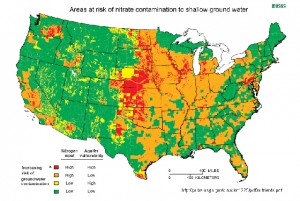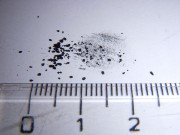A “These are a few of Our Favourite Bees” upcoming exhibitions notice on the Campbell House Museum website (also received via email as a June 4, 2022 ArtSci Salon announcement) features a month long exhibit being co-presented with the Canadian Music Centre in Toronto,
Exhibition
Campbell House Museum
June 22 – July 16, 2022
160 Queen Street W.Opening event
Campbell House,
Saturday July 2,
2 – 4 p.m. [ET]Artists’ Talk & Webcast
The Canadian Music Centre,
20 St. Joseph Street Toronto
Thursday, July 7
7:30 – 9 p.m. [ET]
(doors open 7 pm)These are a Few of Our Favourite Bees investigates wild, native bees and their ecology through playful dioramas, video, audio, relief print and poetry. Inspired by lambe lambe – South American miniature puppet stages for a single viewer – four distinct dioramas convey surreal yet enlightening worlds where bees lounge in cozy environs, animals watch educational films [emphasis mine] and ethereal sounds animate bowls of berries (having been pollinated by their diverse bee visitors). Displays reminiscent of natural history museums invite close inspection, revealing minutiae of these tiny, diverse animals, our native bees. From thumb-sized to extremely tiny, fuzzy to hairless, black, yellow, red or emerald green, each native bee tells a story while her actions create the fruits of pollination, reflecting the perpetual dance of animals, plants and planet. With a special appearance by Toronto’s official bee, the jewelled green sweat bee, Agapostemon virescens!
These are a Few of Our Favourite Bees Collective are: Sarah Peebles, Ele Willoughby, Rob Cruickshank & Stephen Humphrey
The Works
These are a Few of Our Favourite Bees
Sarah Peebles, Ele Willoughby, Rob Cruickshank & Stephen Humphrey
Single-viewer box theatres, dioramas, sculpture, textile art, macro video, audio transducers, poetry, insect specimens, relief print, objects, electronics, colour-coded DNA barcodes.
Bees represented: rusty-patched bumble bee (Bombus affinis); jewelled green sweat bee (Agapostemon virescens); masked sweat bee (Hylaeus annulatus); leafcutter bee (Megachile relativa)
In the Landscape
Ele Willoughby & Sarah Peebles
paper, relief print, video projection, audio, audio cable, mixed media
Bee specimens & bee barcodes generously provided by Laurence Packer – Packer Lab, York University; Scott MacIvor – BUGS Lab, U-T [University of Toronto] Scarborough; Sam Droege – USGS [US Geological Survey]; Barcode of Life Data Systems; Antonia Guidotti, Department of Natural History, Royal Ontario Museum
In addition to watching television, animals have been known to interact with touchscreen computers as mentioned in my June 24, 2016 posting, “Animal technology: a touchscreen for your dog, sonar lunch orders for dolphins, and more.”
The “These are a few of Our Favourite Bees” upcoming exhibitions notice features this artist statement for a third piece, “Without A Bee, It Would Not Be” by Tracey Lawko,
In May, my crabapple tree blooms. In August, I pick the ripe crabapples. In September, I make jelly. Then I have breakfast. This would not be without a bee.
It could not be without a bee. The fruit and vegetables I enjoy eating, as well as the roses I admire as centrepieces, all depend on pollination.
Our native pollinators and their habitat are threatened. Insect populations are declining due to habitat loss, pesticide use, disease and climate change. 75% of flowering plants rely on pollinators to set seed and we humans get one-third of our food from flowering plants.
I invite you to enter this beautiful dining room and consider the importance of pollinators to the enjoyment of your next meal.
Bio
Tracey Lawko employs contemporary textile techniques to showcase changes in our environment. Building on a base of traditional hand-embroidery, free-motion longarm stitching and a love of drawing, her representational work is detailed and “drawn with thread”. Her nature studies draw attention to our native pollinators as she observes them around her studio in the Niagara Escarpment. Many are stitched using a centuries-old, three-dimensional technique called “Stumpwork”.
Tracey’s extensive exhibition history includes solo exhibitions at leading commercial galleries and public museums. Her work has been selected for major North American and International exhibitions, including the Concours International des Mini-Textiles, Musée Jean Lurçat, France, and is held in the permanent collection of the US National Quilt Museum and in private collections in North America and Europe.
Bzzz!

